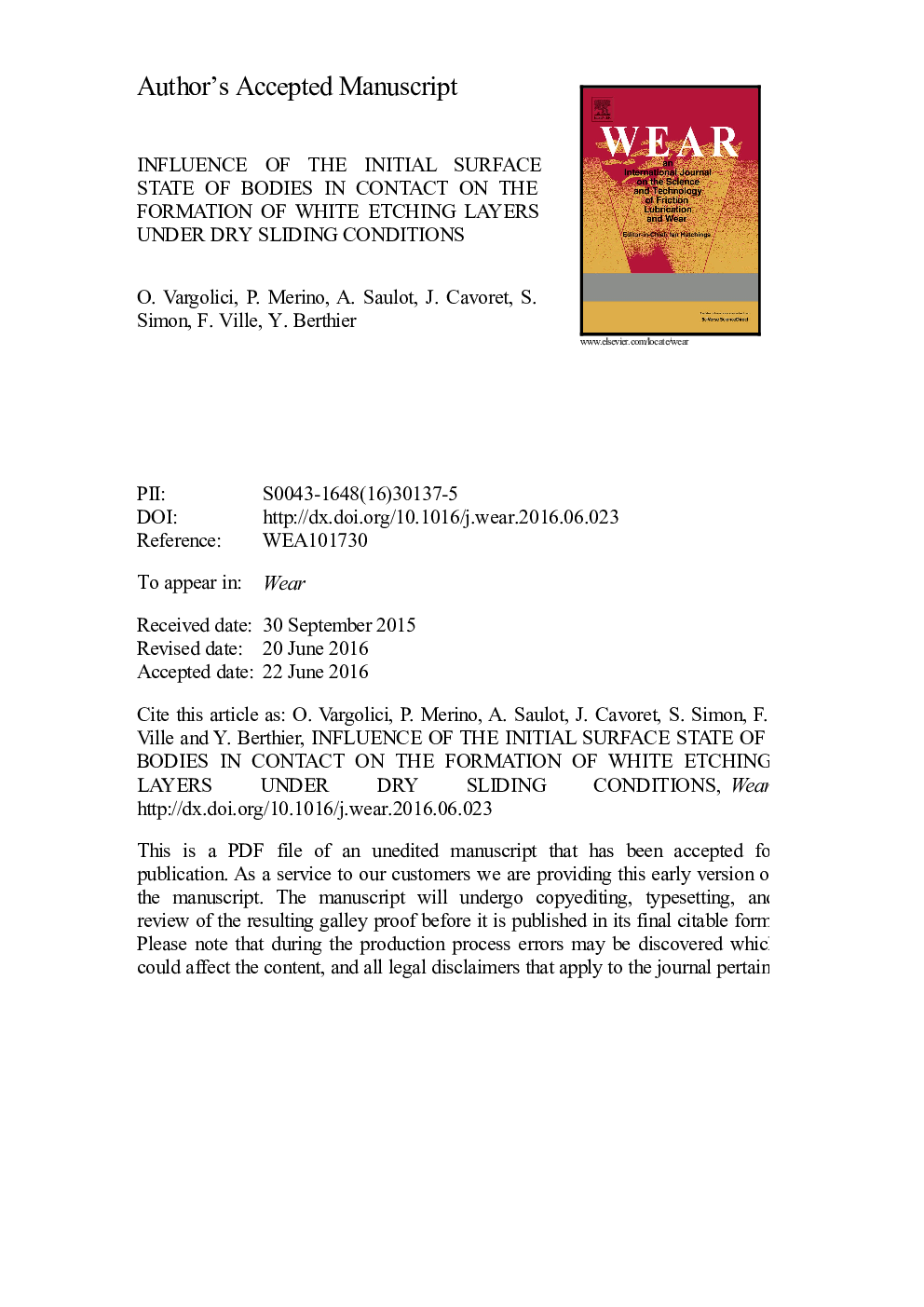| Article ID | Journal | Published Year | Pages | File Type |
|---|---|---|---|---|
| 4986845 | Wear | 2016 | 18 Pages |
Abstract
The white etching layer (WEL) is a bright layer formed on the surface of steel and revealed when the latter is etched with Nital solution (a solution of nitric acid and ethanol). WELs have been observed on rail running bands for more than half a century. They are brittle, about 3 times harder than the traditional rail steel used. Two mechanisms of white etching layer formation are known such as thermal mechanism: temperature increase and quick cooling, or mechanical formation. The main purpose of this work, is to study the influence of the initial state of the sample surfaces on WEL mechanical formation. The samples were either oxidized or run-in before testing on a twin-disc machine under 1Â GPa contact pressure and 0.5% sliding ratio. The results presented incomplete WELs to fully formed WELs at the surface of the disks. The initial run-in or oxidized surface facilitated the birth of WEL and reduced wear.
Related Topics
Physical Sciences and Engineering
Chemical Engineering
Colloid and Surface Chemistry
Authors
O. Vargolici, P. Merino, A. Saulot, J. Cavoret, S. Simon, F. Ville, Y. Berthier,
